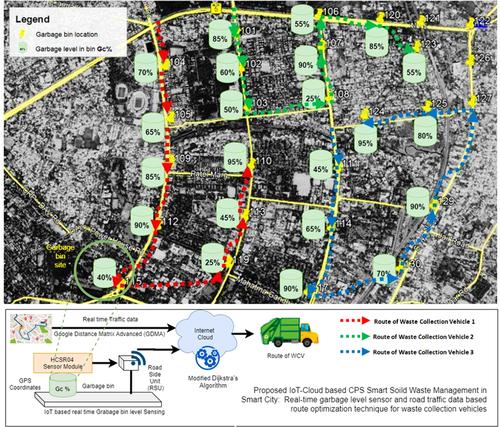IoT cloud-based cyber-physical system for efficient solid waste management in smart cities: a novel cost function based route optimisation technique for waste collection vehicles using dustbin sensors and real-time road traffic informatics
Abstract
IoT cloud-based connected smart dustbins (equipped with sensors) are imperative for efficient waste management in smart city. Municipal agencies can reduce the use of both man and machine by cutting down their overall waste collection route distance as well as number of waste collection vehicles (WCVs) by deploying this proposed cyber-physical system for route optimization of WCVs with capacitated vehicle-routing model. A novel cost function is mathematically modelled using data from dustbin-sensors and real-time road-traffic with modified Dijkstra's algorithm for optimisation of WCVs routes. Amount of solid waste in the dustbin (GC in %), rate of the filling (ΔG) and real-time/dynamic road traffic information from Google distance matrix advanced application programming interface (API) are used for estimation of the optimised route for WCVs. Optimisation goal of this work is to reduce both capital expense (CapEx) and operational expense (OpEx) of solid waste collection in the city by cutting the WCV fleet size and reducing overall distance covered by WCVs. The proposed route optimisation technique is analytically simulated for Bhubaneswar smart city and the result shows 30.28% saving in overall WCVs route distance and hence reducing OpEx around 29.07% and CapEx around 26.83% by reducing WCV fleet size.


 求助内容:
求助内容: 应助结果提醒方式:
应助结果提醒方式:


